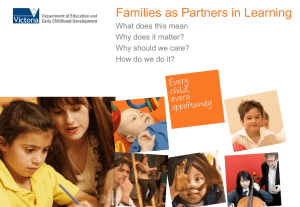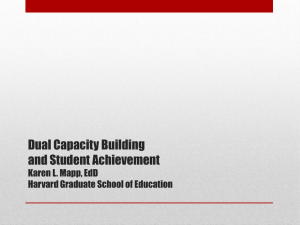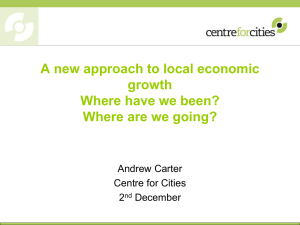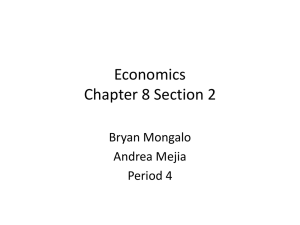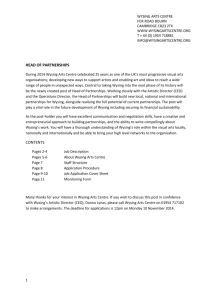How to write a policy for the Arts in schools Background This
advertisement
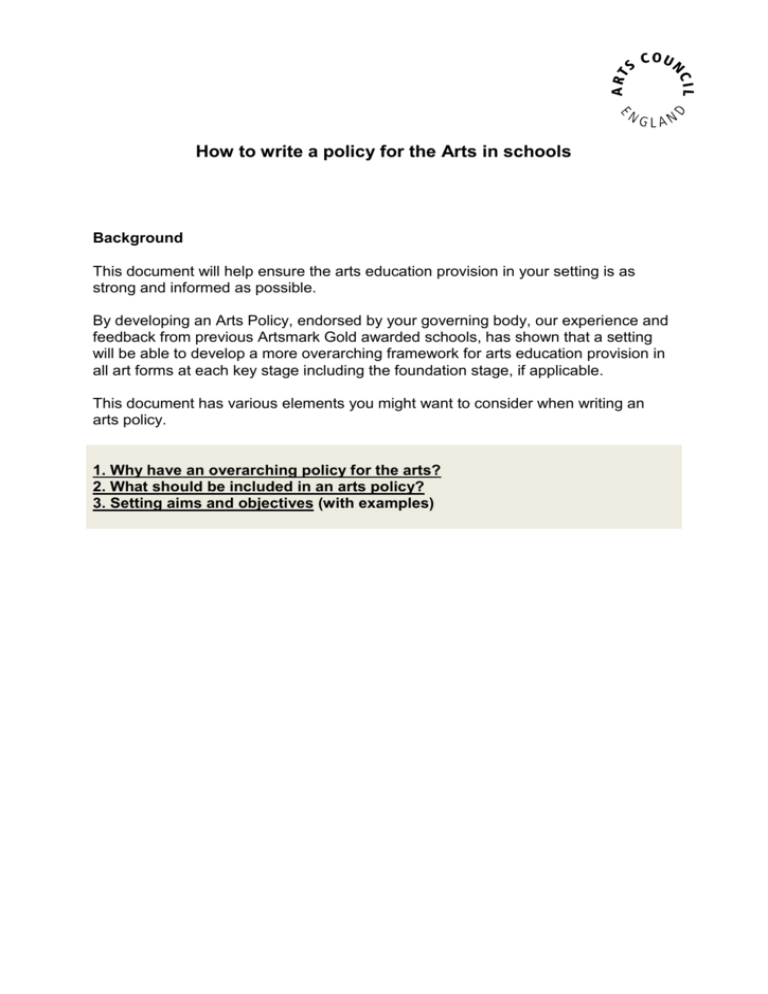
How to write a policy for the Arts in schools Background This document will help ensure the arts education provision in your setting is as strong and informed as possible. By developing an Arts Policy, endorsed by your governing body, our experience and feedback from previous Artsmark Gold awarded schools, has shown that a setting will be able to develop a more overarching framework for arts education provision in all art forms at each key stage including the foundation stage, if applicable. This document has various elements you might want to consider when writing an arts policy. 1. Why have an overarching policy for the arts? 2. What should be included in an arts policy? 3. Setting aims and objectives (with examples) 1. Why have an overarching policy for all the arts? An overarching arts policy can ensure that: all children/young people are given an entitlement to a range of high quality arts experiences, whatever their background and ability high quality arts provision doesn’t just rely on the enthusiasm of individuals but is embedded in the ethos and planning mechanisms of the school/ high quality resources are allocated to arts provision, including staff, continual professional development, materials, facilities and equipment opportunities to learn about the arts of different cultures are embedded in each curriculum area of the arts participation and achievements in the arts, including Arts Award, are recognised and celebrated there is a strategic approach to arts provision which includes partnerships with artists and arts organisations and on-going links with the community Case studies show that arts rich schools value the contribution the arts make to quality of life for children/young people and the unique opportunities offered by the arts for creative self-expression 2. What should be included in an arts policy? An arts policy should identify: why you include the arts in the curriculum what the particular contribution that you consider the arts make towards children’s/young people’s education? how the arts are defined (this must include, though not exclusively, art and design, dance, drama and music) how you provide high quality resources that can be accessed by all children/young people how you monitor and evaluate the impact of your provision If you have a policy, it will be monitored by Governors. The arts policy could therefore indicate: where objectives are to be found (for example in a self evaluation plan for the arts as a whole or in individual subject self evaluation plans) when governors agreed the policy when it will be reviewed who is responsible for ensuring that the impact of the arts is analysed and data published and celebrated. 3. Setting aims and objectives You can show how your school defines the arts and provides and monitors high quality arts at all key stages through your key aims and specific objectives. We have given an example below of four aims that you arts policy could state and the associated objectives with each aim. A school who met all the objectives below would be in a very strong position to get Artsmark Gold. Aim one – to ensure all children and young people experience the richness of a broad arts curriculum Objectives provide a minimum of 12% of curriculum time dedicated to the arts including art and design, dance, drama and music at Key Sages 1, 2 and 3 offer up to four arts subjects leading to certification at Key Stage 4 offer a minimum of three courses leading to accreditation in the arts for all Post 16 students encourage all young people to take at least one arts subject at Key Stage 4 leading to accreditation at Key Stage 4 provide access to art and design or music or drama or dance at Key Stage 4 and Post 16 through extra-curricular opportunities, if is not offered as an accredited subject offer opportunity for children/young people to take the Arts Award through the formal curriculum and extra-curricular activities provide a rich variety of other regular opportunities in the arts for those who do not choose to take an arts subject at Key Stage 4 or at Post 16. provide a minimum of one extra-curricular arts activity for Year 2 children provide a minimum of three extra-curricular arts activities for all children at Key Stage 2 (and KS3) provide a minimum of six extra-curricular arts activities for all young people at each year group in Key stages 3, 4 and Post 16 across a minimum of two artforms Aim two – to provide every child and young person with opportunity to be inspired by the arts and achieve success through the arts Objectives ensure targets for the arts are always included in our school improvement plan and all arts subjects have measurable targets that aim high and are monitored and reviewed in line with all subjects. ensure our arts facilities and resources are of the highest quality and accessible to the full range of children/young people including those who have special needs, are carers or are hard to reach recruit high quality arts specialist teachers for each of our arts subjects (as appropriate if you teach key stages that use specialist teachers) recruit specialist arts teachers or if necessary provide additional support for nonspecialists through our CPD and partnerships programme (other schools) provide children/young people with opportunities to experience the work of professional artists through visits to arts organisations, workshops with artists and other partnerships at least three times at each key stage have in place systematically (see all units of work) planned opportunities provided by the arts for students to know and celebrate the range of world cultures that are reflected in the arts through local, regional, national and international sources ensure all teachers and support staff have opportunities for professional development in the arts that inspires their own creativity and keeps them abreast of innovation in the arts as well as developments in wider education on at least an annual basis explore innovative ways for children/young people to express their ideas and work using performance media and technology each arts subject Aim three – to strengthen partnerships and build new partnerships which make the arts sustainable and bring benefit to children, young people and the wider community establish and build on contacts/partnerships within commerce and industry in our local community plan programmes and other events with partner schools to sustain and increase opportunities for all. provide opportunities for the wider community of school/ - staff, governors, parents and other carers, local schools industry etc to inform and have access to our schools arts programme through performances, workshops, exhibitions, concerts and the internet offering at least one of these each term Aim four – to nurture artistic talent and develop children’s young people’s transferable life skills that arise from successful arts education, including the creative use of imagination and considered risk taking, co-operation, tenacity, flexibility and responsibility as well as leadership and entrepreneurial skills systematically apply all previously listed objectives provide opportunities for our children/young people to influence what is included in our provision in the arts (eg through the Students Forum which meets each month ) provide our students with access to opportunities that celebrate their achievements in the arts including through the Arts Award provide opportunities for young people to create, develop and market performance events ensure young people are informed about employment in the arts at each key stage and have pathways to future careers in the arts through partnerships with artists and arts organisations, Arts award, career events, work based placements and apprenticeships and regular links with FE and HE courses and qualifications.


